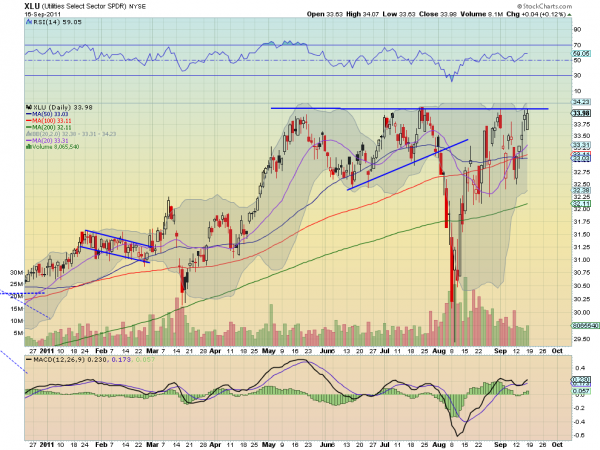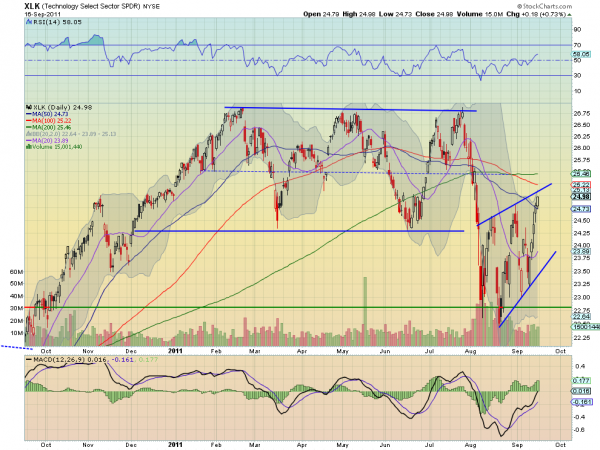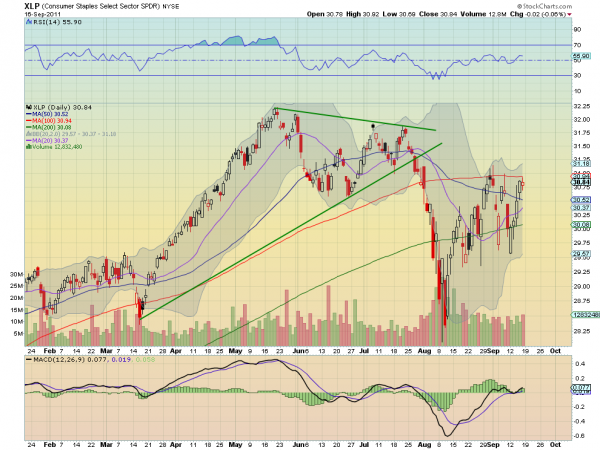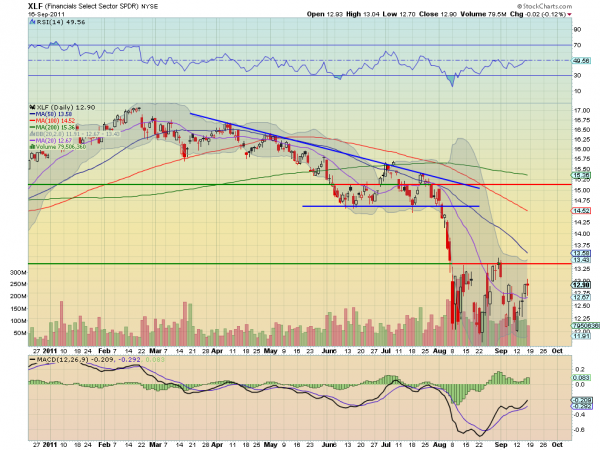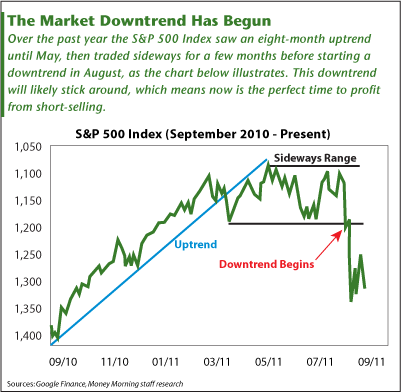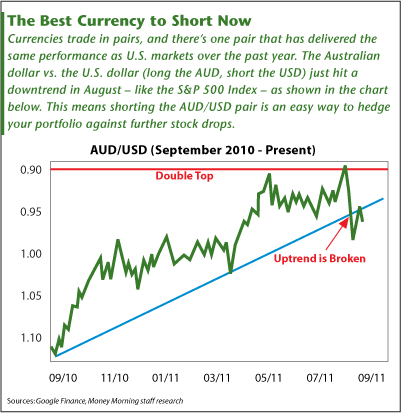As anticipated by LEAP/E2020 since November 2010, and often repeated up to June
2011, the second half of 2011 has started with a sudden and major relapse of the
crisis. Nearly USD 10 trillion of the USD 15 trillion in ghost assets announced
in GEAB N°56 have already gone up in smoke. The rest (and probably much more)
will vanish in the fourth quarter of 2011, which will be marked by what our team
calls "the implosive fusion of global financial assets". It’s the two major
global financial centers, Wall Street in New York and the City of London, which
will be the "preferred reactors" of this fusion. And, as predicted by LEAP/E2020
for several months, it’s the solution to the public debt problems in some
Euroland countries which will enable this reaction to reach critical mass, after
which nothing is controllable; but the bulk of the fuel that will drive the
reaction and turn it into a real global shock (1) is found in the United States.
Since July 2011 we have only started on the process that led to this situation:
the worst is ahead of us and very close!
In this issue N°57, we have chosen to address, very directly, the great
manipulation organized around the Greek crisis and the Euro (2), whilst
describing its direct link with the implosive fusion process of financial assets
worldwide. Also in this issue, LEAP/E2020 presents its anticipations for the
gold market for the period 2012-2014 as well as its analyses on
neo-protectionism which will be introduced from the end of 2012. In addition to
our monthly recommendations on Switzerland and the Swiss Franc, currencies, real
estate and financial markets, we also present our strategic advice to the G20
leaders less than two months from the G20 summit to be held in Cannes.
US
economic output index (1974-2011) (grey shading: recessions; broken blue line:
recession warning; blue: economic output index and in red, forecast for the 3rd
and 4th quarters 2011) - Source: Streetalk/Mauldin, 08/2011
Greek crisis and the Euro: Itemizing the huge manipulation in
progress
But let’s come back to Greece and what is beginning to be a "very repetitive
old story (3)" which, as we have already explained, returns to the front of the
media stage every time Washington and London are in serious difficulties (4).
Moreover, coincidentally, the summer has been disastrous for the United States
which is now in recession (5), which has seen their credit rating cut (an event
deemed unthinkable by all the "experts" only six months ago) and exposed their
political system’s state of widespread paralysis (6) to an astonished world, all
whilst being incapable of putting any serious measure in place to reduce their
deficits (7). At the same time, the United Kingdom is sinking into depression
(8) with riots of uncommon violence, an austerity policy that fails to control
budget deficits (9) whilst plunging the country into an unprecedented social
crisis (10), and a ruling coalition that doesn’t even know why it governs
together against the backdrop of the scandal of collusion between political
leaders and the Murdoch empire. No doubt, in such a context, everything was ripe
for a media relaunch of the Greek crisis and its corollary, the end of the Euro!
If LEAP/E2020 had to summarize the "Hollywood style" or "Fox News" (11)
scenario, we would have the following synopsis: "While the US iceberg is ramming
the Titanic, the crew leads the passengers in search of dangerous Greek
terrorists who may have planted bombs on board!" In propaganda terms, it’s a
known recipe: it’s a diversion to allow, first of all, the rescue of the
passengers one wants to save (the informed elite who know very well that there
are no Greek terrorists on board) since everyone can’t be saved; and then, hide
the problem’s true nature for as long as possible to avoid a revolt on board
(including some of the crew who sincerely believe that there really are bombs on
board).
Focusing on the background, we must emphasize that the "promoters" of a Greek
crisis presented as a fatal crisis for the Euro have spent their time repeating
it for almost two years without any of their forecasts coming to pass in any
shape or form (12) (except to continue talking about it). Facts are stubborn:
despite the media outcry that should have seen off many economies or currencies
(13), the Euro is stable, Euroland has come on in leaps and bounds in terms of
integration (14) and is about to break even more spectacular new ground (15),
the emerging countries continue to diversify out of US Treasury Bonds and buy
Euroland debt, and Greece’s exit from the Euro zone is still completely beyond
consideration except in the Anglo-Saxon media articles whose writers generally
have no idea of how the EU functions and even less of the strong trends that
drive it.

Comparison of economic data Euroland-USA (2010) (State debt,
unemployment, GDP growth, current account balance) - Source: Spiegel, 07/2011
Now our team can do nothing for those who want to continue to lose money by
betting on a Euro collapse (16), Euro-Dollar parity, or Greece’s Euroland exit
(17). These same people spent lot of money to protect themselves against the
so-called "H1N1global epidemic" that experts, politicians and the media of all
kinds "sold" for months to people worldwide and proved to be a huge farce fueled
in part by pharmaceutical companies and cliques of experts under their orders
(18). The rest, as always, is self-propelled by the lack of thought (19),
sensationalism and mainstream media conformity. In the case of Euro-Greek
crisis, the scenario is similar, with Wall Street and the City in the role of
the pharmaceutical companies (20).
When Wall Street and the City panic before the solutions in the
course of forging Euroland
In fact we recall that what terrifies Wall Street and the City are the
lessons that Euroland’s leaders and its people have been in the process of
learning from these three years of crisis and the ineffective solutions that
have been applied. The nature of Euroland creates a unique forum for discussion
among the elite and American and British public opinion. And this is what
disturbs Wall Street and the City, which is systematically trying to kill this
forum, either by trying to plunge it into a panic by announcing the end of the
Euro for example; or by reducing it to a waste of time and evidencing Euroland’s
ineffectiveness, an inability to resolve the crisis. Which is the limit given
the complete paralysis prevailing in Washington!
However, it’s really this discussion forum that allows Eurolanders to move
forward on the path to a lasting solution to the current crisis. This discussion
forum is an integral part of European construction where opposing views of the
methods and solutions confront each other before ultimately agreeing on a
compromise (and it’s still the case as the very important decisions taken since
May 2010 prove). Thus it broadens the debate to a whole raft of participants,
coming from 17 different countries (21), several common institutions, and it
roots itself in the discussions of seventeen public opinions. Yet it’s from the
clash of ideas that light shines forth: of the brutal clash of ideas, the Greek
philosopher Heraclitus said 2500 years ago "Some it makes gods, some it makes
men, some it makes slaves, some free". But Euroland’s citizens refuse to let
this crisis turn them into slaves and that’s why the current debates within
Europe are needed and useful. In three years, between 2008 and 2011, they have
made two key things possible in the future:
. they relaunched European integration around Euroland and henceforth placed
it on a path of accelerated integration. Our team now expects a strong revival
of European politics from the end of 2012 (similar to the 1984-1985 period)
including a Euroland political integration treaty which will be put to a
Euroland-wide referendum by 2015 (22)
. they allowed the gradual emergence of two simple but very strong ideas:
saving private banks is of no use to solve the crisis and it is necessary that
the markets (that is to say essentially the big Wall Street and City financial
operators) fully assume their risks without any further guarantee from the
state. Today, these two ideas are at the heart of the Euroland debate, both in
public opinion and amongst the elite ... and they gain ground every day. This is
what causes fear on Wall Street, in the City, and amongst major private
financial operators. This is the wick that has nearly burned down that will
trigger the implosive fusion of global financial assets in the fourth quarter
(in the prevailing context of the US recession and its inability to reduce its
public deficits).
If markets begin to anticipate a 50% drop in Greek and Spanish securities
it’s because they really sense the direction which events in Euroland are
taking. For LEAP/E2020, there is no doubt that minds are ripe, throughout most
of Euroland, for private creditors being asked to pay 50%, or even more, to
resolve the future problems of public debt. This is, without doubt, a problem
for European banks, but it will be managed to protect depositors. The
shareholders themselves will have to take full responsibility: besides it’s
really the foundation of capitalism!
Wall Street and the City, and their media intermediaries desperately want
this debate not to take place, regardless of whether it’s ended by panic, so
that governments should be forced to listen to their "experts" who assure them
that the only way is to continue to recapitalize banks, and flood them with
liquidity (23) ... as is the case in Washington and London. Two countries where
these same financial institutions reign supreme in the government.
Incidentally the battle rages around the ECB as we mentioned in a previous
GEAB: the appointment of Mario Draghi, a formerly with Goldman Sachs, the
resignation of Jurgend Stark (24), ... arise out of these attempts to put
Frankfurt under the same tutelage as London and Washington. But they are doomed
from the start by virtue of this open forum, structurally inscribed in European
construction, where discussions are fed by the failed policies of 2008 and the
growing outbreak of public opinion in the debate. "Qui va piano va sano e qui va
sano va lontano" (25) as the Italians say. This crisis is of historic
proportions as we have said since February 2006. The steps to take to get
through it as best as possible and come out of it stronger (free men and not
slaves to quote Heraclitus) thus require serious and deep discussion (26) ...
therefore time. And the time taken by the Eurolanders, is money lost to the
markets ... which explains their fears. LEAP/E2020 thinks, of course, that it’s
also necessary to act and we have pointed out from May 2010 that the actions
taken in Euroland were of a magnitude unprecedented in recent European history.
And we believe that we must allow time for the second aid package to Greece to
be implemented. For the rest, we know also that the current leaders are mostly
"at the limit" and it will be necessary to wait until the mid-2012 to witness a
new and powerful boost to Euroland integration (27).
Meanwhile, with 340 billion USD to find for refinancing in 2012 (28), the
European and American banks will continue to kill each other while trying to
maintain the pre-crisis situation which gave them unlimited central bank
support. As for Euroland, they may have a very bad surprise.
Comparison of the Philadelphia Federal Reserve index and US
industrial production (2002-2011) - Sources: Philadelphia Fed, MarketWatch,
08/2011
The fourth quarter 2011 marks the end of two key examples of the
world before the crisis
The implosive fusion of the fourth quarter will thus directly result from the
encounter between two new realities that contradict two basic conditions of
existence of the world before the crisis:
. one, born in Europe, consists of now rejecting the idea that private
financial operators, of which Wall Street and the City are the embodiment par
excellence, are not fully responsible for the risks they take. Yet for decades,
this was the prevailing idea that fueled the tremendous growth of the financial
economy: “Heads I win, tails you bail me out”. Even the existence of large
Western banks and insurance companies has become intrinsically linked to this
certainty. The balance sheets of major players on Wall Street and the City (and
of many large Euroland and Japanese banks) are unable to withstand this
tremendous paradigm shift (29).
. the other, generated in the United States, is the proven end of the US
engine of global growth (30) against a background of the country’s complete
political paralysis which, de facto, will end 2011 as Greece ended 2009: the
world discovering little by little that the country has a debt it can no longer
support, that its creditors are unwilling to lend, and its economy is unable to
cope with significant austerity without plunging into a deep depression (31). In
some ways, the analogy can be taken further: just as the EU and the banks, from
1982 to 2009, lent freely to Greece ... and without pressing for accounts, over
the same period, the world has lent freely to the United States believing its
leaders’ promises about the state of the economy and the country’s finances. And
in both cases, the money has been wasted in real estate booms with no future, in
extravagant crony politics (in the US cronyism is Wall Street, the oil industry,
health service providers) and in unproductive military spending. And in both
cases, everyone discovers that in a few quarters you can’t fix decades of
recklessness.
The politico-financial « perfect storm » of November 2011
So, in November 2011 the United States will brace itself for a
politico-financial "perfect storm" that will make the summer problems look like
a slight sea breeze. The six elements of the future crisis have already come
together (32):
. the "super committee" (33) responsible for deciding budget cuts on which
there was no agreement this summer will prove incapable of resolving the
tensions between the two parties (34)
. the automatic budget cuts required to be made in the absence of agreement
will result in a major political crisis in Washington and increasing tensions,
especially with the military and the recipients of social benefits. At the same
time, this "automatic function" (a real abdication of decision-making authority
by Congress and the United States Presidency) will generate major disturbances
in the functioning of the state system.
. the other major rating agencies will join S&P in downgrading the US
credit rating and diversification out of US Treasury Bonds will accelerate, in
the knowledge that the United States now depends primarily on short-term
financing (35).
. the inability of the Fed to do anything but talk and manipulate stock
markets or gasoline prices in the United States (36), now makes any last-minute
"rescue" impossible.
. over the next three months the US public deficit will increase dramatically
as tax revenues are now already in the process of collapsing under the impact of
the relapse into recession (37). In other words the increased debt ceiling voted
in a few weeks ago will be reached well before the November 2012 elections
(38)... and this is information that will spread like wildfire in the fourth
quarter of 2011 ... reinforcing all investors’ fears to see the United States
follow Euroland’s example over Greece and force its creditors to take heavy
losses.
. Barack Obama’s new plan in the fight against unemployment will have no
significant effect. On the one hand, it’s not up to the challenge and, for this
reason, can’t rally the country’s energies; and on the other, it will be cut to
pieces by the Republicans who will only keep the tax cuts... The only result of
which will be to increase the country's debt even more (39).
The US debt super committee’s connections with Washington
lobbyists - Source: Washington Post, 09/2011
So for LEAP/E2020, it's a combination of all these elements at the end of
2011 that will trigger this major financial shock ... a kind of final shock
thrusting the planet out of the world before the crisis for good. But the world
after is still to be built because many futures are possible, beginning 2012. As
Franck Biancheri anticipated in his book, the period 2012-2016 forms an
historical crossroads. One must try not to mistake the path (40)!














